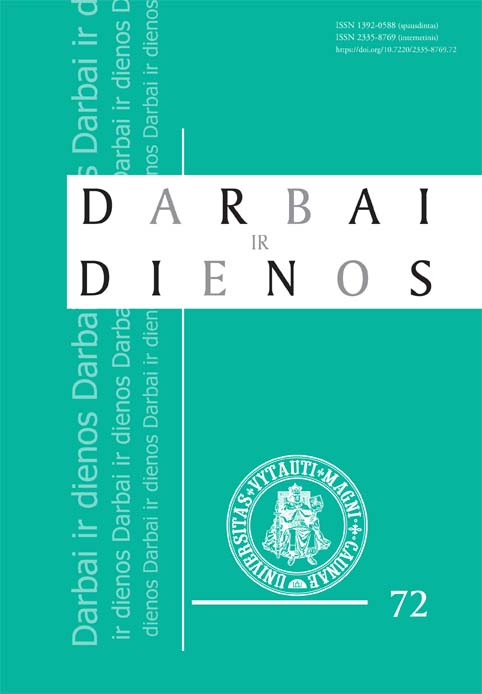Bažnytinių metrikų knygų (pa)nauda istorinės demografijos tyrimuose: 1709–1711 metų maro epidemijos Klaipėdos šv. Jono parapijoje atvejis
Church Metrics in Historical Demographic Research: the Case of the Plague in Klaipeda’s St. John the Evangelist Parish
Author(s): Milda KontrimėSubject(s): Health and medicine and law, Demography and human biology, 18th Century, History of Religion
Published by: Vytauto Didžiojo Universitetas
Keywords: 18th century; Historical demography; Parish records; Plague;
Summary/Abstract: Historical demographic research is increasingly gaining in popularity. The research of past population changes is based on population censuses, church metrics, other archival sources, and archaeological and anthropological aspects. Church metrics perfectly reflect times up to the beginning of the general population census (late 18th century – early 19th century). Problems are the age of the source and the complexity of church metrics. It is quite common that old books have been filled in inconsistently (more commonly noticed in the period of the plague). Books recording deaths (burials) and christenings in Klaipeda’s St. John the Evangelist parish during the early 18th century were used for this research. According to the received statistical analysis, parish demographic decline is directly linked to the plague epidemic in municipal Klaipeda on the following dates: Spring 1709 – the beginning of the plague epidemic; August to November 1710 – the peak of the epidemic; Spring 1711 – the end of the plague.
Journal: Darbai ir dienos
- Issue Year: 2019
- Issue No: 72
- Page Range: 65-76
- Page Count: 12
- Language: Lithuanian

